
Drought-resistant asters
6 varieties for a dry garden
Contents
Asters dazzle the garden with their charming, abundant, and decorative flowerings. In fact, there are a multitude of varieties, tall or short, with white, pink, purple, or blue flowers, suitable for heavy, poor, or stony soil. Some asters even have the ability to withstand heat and dry soil. Discover our selection of 6 most drought-resistant asters.
Aster rugulosus 'Asrugo', a sturdy variety
Aster rugulosus ‘Asrugo’ is a charming perennial, drought-resistant and fond of warmth. Its upright habit reaches 45 cm in height when in flower and 40 cm in width. From August to October, it offers a multitude of small daisy-like flowers in white and pink tones, with a golden centre turning brown. To ensure successful planting, provide it with well-drained, well-worked soil, free from stagnant moisture in winter, in full sun or partial shade. This aster will make a stunning display at the edge of borders, in rockeries, and even in pots, alongside Sedums, Achilleas, Carex, and Erigerons.
Aster sedifolius 'Nanus', a small late and hardy variety
Aster sedifolius ‘Nanus’, also known as “Sedum-leaved Aster”, is a charming little variety that is very resistant to cold, heat, and drought. Its dense habit forms a compact tuft, dark green, measuring 30 cm in all directions. Highly floriferous, it produces stunning small blue-mauve flowers from August to early November, with a yellow centre that deepens in colour over time. You can plant it in ordinary, calcareous, or clayey soil, even poor and stony, as long as it is well-drained, from moist to dry. It thrives in sunny or partially shaded locations. This aster is ideal for enhancing a natural garden, a border, a bank, a pot, or a rockery. It can be paired with other perennial plants such as Sedums, grasses, Evening Primroses, as well as some Allium bulbs and even groundcover roses.
Discover other Asters
View all →Available in 1 sizes
Available in 0 sizes
Available in 2 sizes
Available in 2 sizes
Available in 1 sizes
Available in 1 sizes
Available in 0 sizes
Available in 1 sizes
Available in 1 sizes
Available in 1 sizes
Aster turbinellus, a large wild variety
Aster turbinellus is a beautiful wild perennial, boasting excellent hardiness and tolerating dry soils. It forms a lovely bushy clump reaching 1.2 m in height when in flower, with a spread of 70 cm. Highly decorative, its originality lies in its upright grey-green stems, which turn purple-brown over time. Its lavender-blue to pale violet flowers, with a yellow-purple centre, bloom from October to November. This aster prefers a sunny position in ordinary soil that is not too heavy or too poor, well-worked, and kept moist to dry, sheltered from strong winds. It will find its place in a wild garden, at the back of a border, at the feet of bushes, or on top of a bank, alongside Penstemon, ornamental grasses, and Sedum.
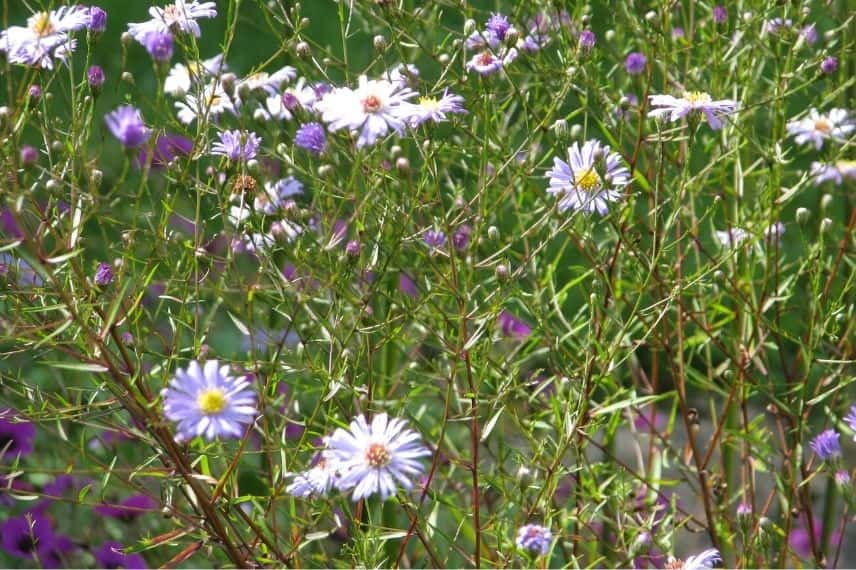
Aster turbinellus – photo Peganum-Flickr
Read also
6 ferns that tolerate droughtAster tongolensis 'Berggarten', a spring-flowering variety
Aster tongolensis ‘Berggarten’ is a small, very hardy and drought-tolerant variety. Its deciduous foliage, a lovely soft green, forms a compact groundcover clump 35 cm wide. From May to June, floral stems 40 cm tall appear, bearing large sky-blue to mauve flowers with a golden-orange centre. It thrives in well-drained, fairly rich soil and full sun. This beautiful aster is perfect for enhancing a rockery, a pot, or as a border in a flowerbed. You can pair it with saxifrages, achilleas, rudbeckias, grasses, sedums, and a Campanula poscharskyana ‘Stella’.
Aster alpinus 'Goliath', a semi-evergreen variety with summer flowering
Aster alpinus ‘Goliath’ is an interesting variety due to its dark green, semi-evergreen foliage, which forms a low, spreading cushion. Its flowering begins in June and continues into July, producing beautiful lavender-blue flowers with a golden centre, reaching a height of 25 cm. Native to the Alps, this aster is very hardy and easy to grow in full sun, in ordinary, calcareous, well-drained soil, and it tolerates occasional drought. It will naturally find its place in borders, on slopes, in rockeries, and even in pots. It can be paired with Scabious, sedums, and Delosperma. It is worth noting that all Asters of the ‘Alpinus’ species have similar hardiness and drought tolerance characteristics.
Aster linosyris, a wild and unobtrusive variety
Aster linosyris (recently renamed Galatella linosyris) is a hardy, wild perennial that is quite understated. It stands out from other asters with its unique yellow pompom-shaped flowers, which appear from August to October. This aster forms a small bush, measuring 15 cm high in summer, then reaching 60 cm in height during flowering, with a width of 40 cm. Well-suited to heat and drought, the Aster linosyris is perfect for southern gardens, rockeries, slopes, and coastal areas. You can grow it in full sun, in poor, well-drained, stony, or even sandy and calcareous soil. It can be paired with Lavender, Yarrow, Globe Thistle, and Spurge.
For further reading
- Discover all our beautiful Aster varieties.
- Learn everything about Asters, planting, growing and care.
- Autumn Asters: 3 points to choose and succeed with them!
- Find our tips on how to stake an Aster.
- Discover 10 ideas to pair Asters.
- Subscribe!
- Contents

































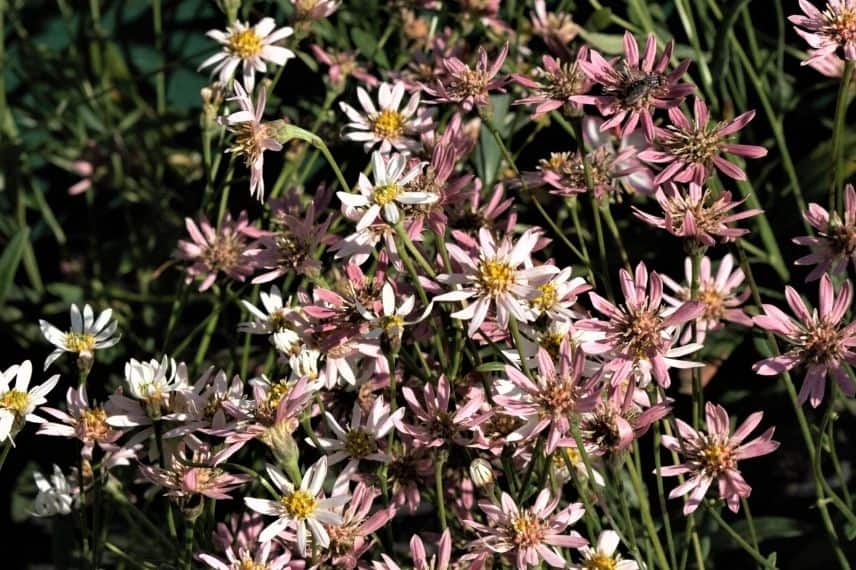
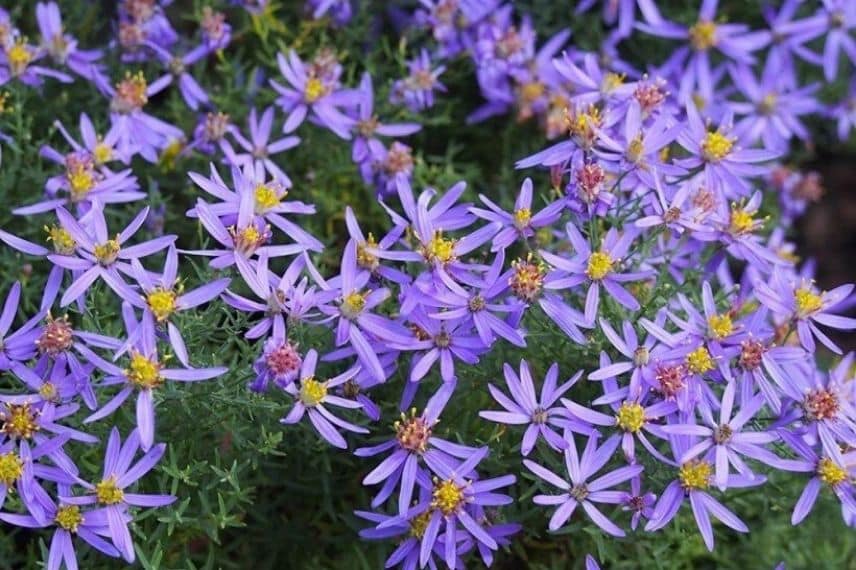
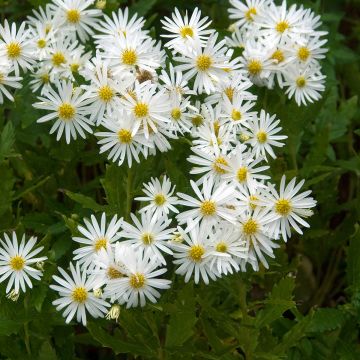
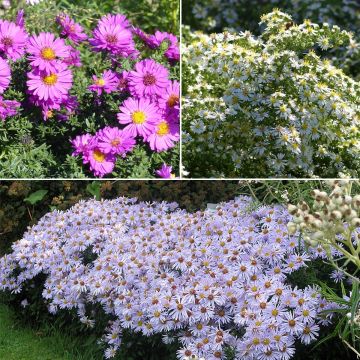


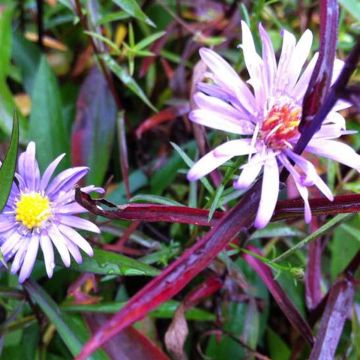
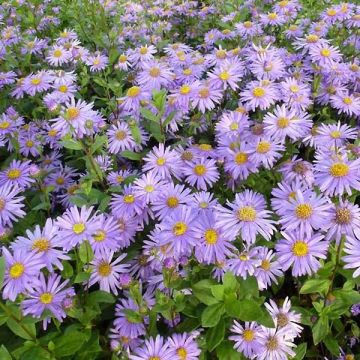
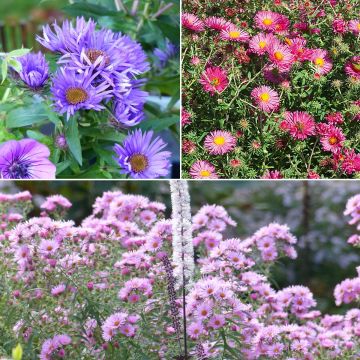

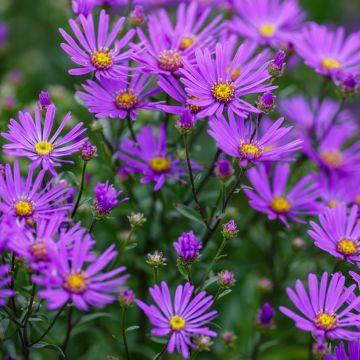

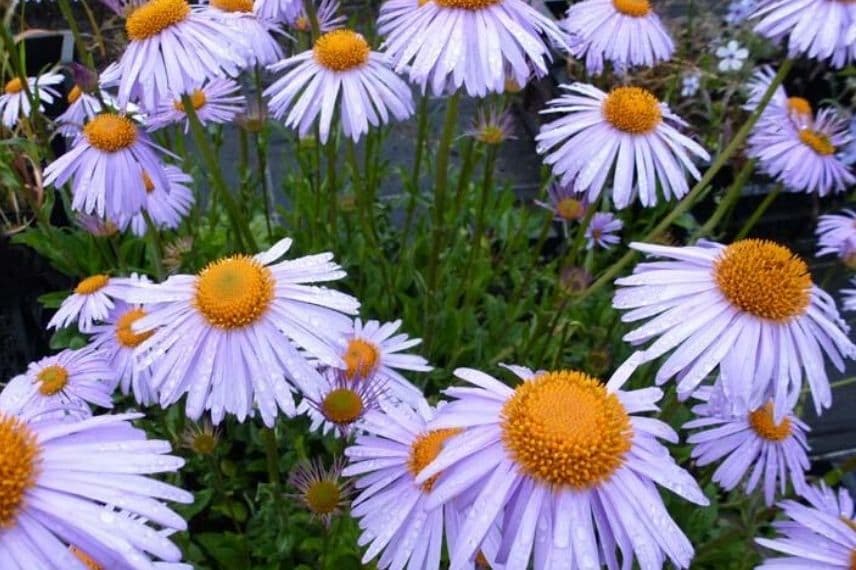
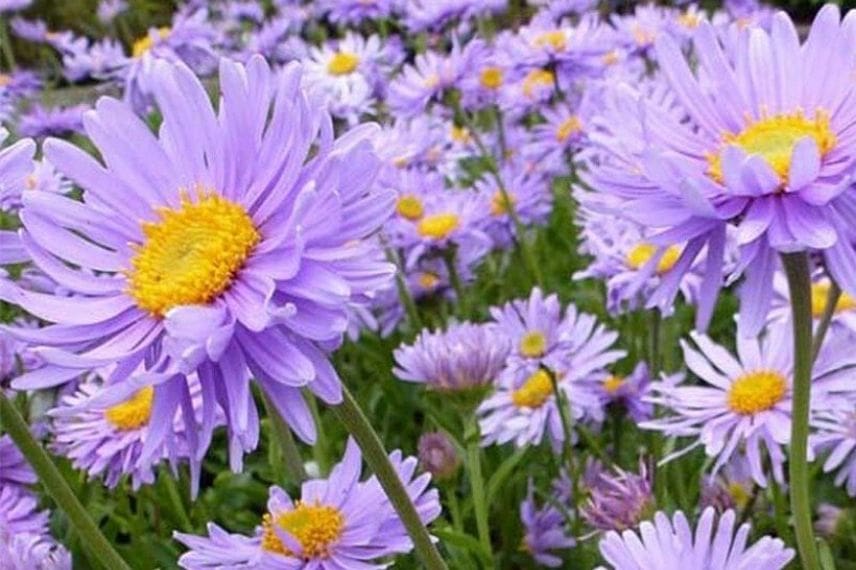
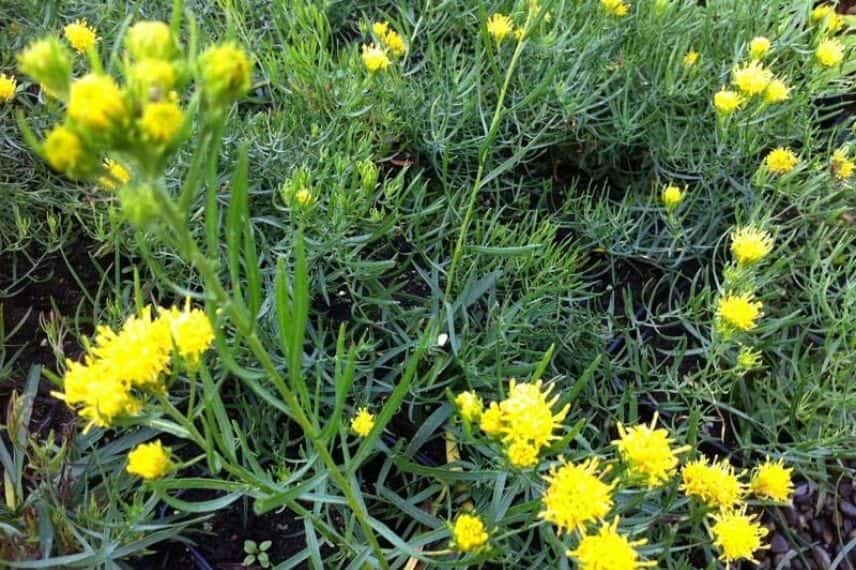
Comments